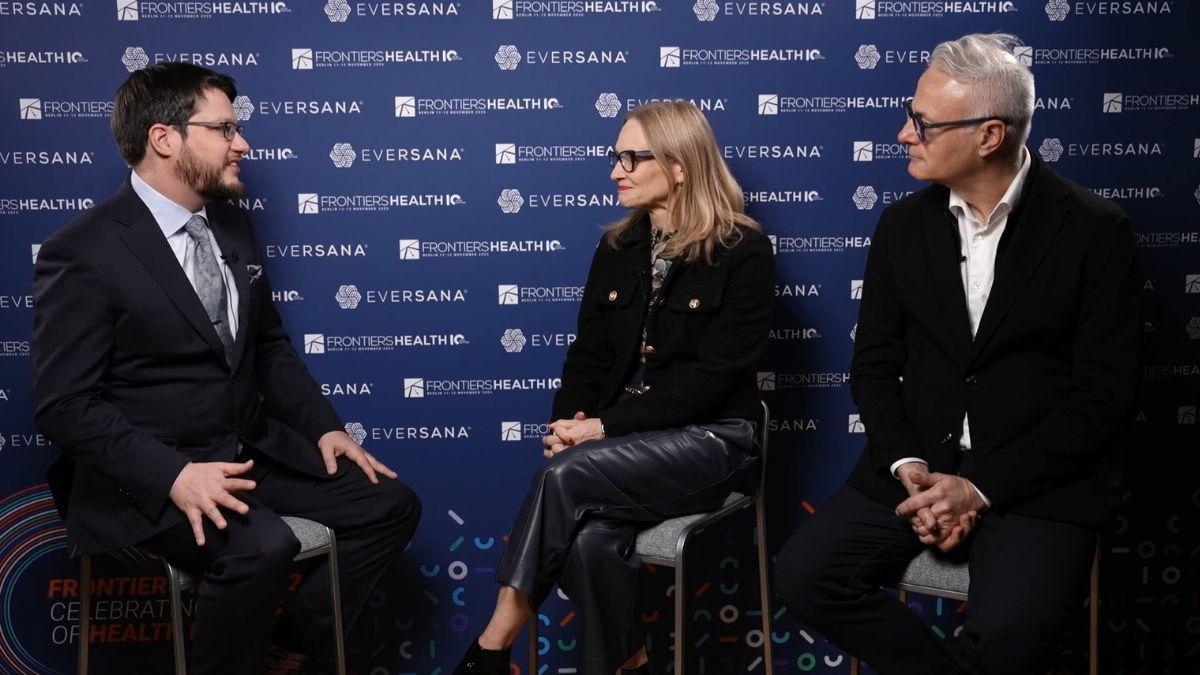Update on Attention Deficit Hyperactivity Disorder (ADHD) treatments

In our central nervous system disorders focus month, Suzanne McCarthy provides us with an update on the treatments available in the UK for patients with Attention Deficit Hyperactivity Disorder (ADHD).
Attention Deficit Hyperactivity Disorder (ADHD) is a common neurodevelopmental disorder characterised by the symptoms of inattention, impulsivity and hyperactivity. It is reported that the prevalence of ADHD in children globally is approximately 5%.1 Traditionally, ADHD has been thought of as a condition affecting children, from which they 'grow out' of as they get older. However, it is now recognised as a valid diagnosis in adults as symptoms and impairments of ADHD are known in many patients to persist past childhood and adolescence. This article will focus on pharmacological treatments available for treating ADHD and the epidemiological data on their use across the life spectrum.
Stimulant treatment
In the UK, there are two central nervous system stimulant treatments licensed for the treatment of ADHD in children and adolescence, methylphenidate and dexamfetamine. The mode of action of the stimulants in treating ADHD symptoms is not completely understood, but it is thought that they work by increasing the intrasynaptic concentrations of the neurotransmitters dopamine and noradrenaline in the frontal cortex of the brain as well as subcortical regions associated with motivation and reward.2 Both methylphenidate and dexamfetamine do this by blocking the presynaptic membrane dopamine transporter (DAT); dexamfetamine also releases the neurotransmitters into the extraneuronal space by blocking the intraneuronal vesicular monoamine transporter (VMAT) and is thus a more potent stimulant.3
Methylphenidate is licensed as part of a comprehensive treatment programme for ADHD in children aged 6 years of age and over when psychological, educational and social measures prove insufficient.4 It is available in a range of immediate release (Ritalin ®, Medikinet ®, Equasym® and generic methylphenidate) and extended release preparations (Concerta XL ®, Medikinet XL ®, Equasym XL ®). Methylphenidate is not licensed for the initiation of treatment for ADHD in adults. Concerta XL ® is the only methylphenidate preparation which is licensed as continuation treatment; for patients who started treatment prior to adulthood, showed a clear benefit from the treatment and whose symptoms continue into adulthood.5
"It is reported that the prevalence of ADHD in children globally is approximately 5%."
Dexamfetamine is administered either as the generic drug or as lisdexamfetamine, an inactive prodrug, which is converted to the active form dexamfetamine.6,7 Dexamfetamine is licensed for children from 3 years for the treatment of refractory hyperkinetic states. It is licensed in adults only in the treatment of narcolepsy.6 Lisdexamfetamine, which received its UK marketing authorisation in February 2013, is indicated as part of a comprehensive treatment programme for ADHD in children aged 6 years of age and over when response to previous methylphenidate treatment is considered clinically inadequate. It is also indicated as continuation treatment in adulthood, when symptoms in adolescents persist into adulthood and patients have shown clear benefit from treatment.7
Non-stimulant treatment
Atomoxetine is the only non-stimulant licensed for the treatment of ADHD in children of 6 years and older, in adolescents and in adults as part of a comprehensive treatment programme. Atomoxetine is a selective and potent inhibitor of the pre-synaptic noradrenaline transporter, which has minimal affinity for other noradrenergic receptors or for other neurotransmitter transporters or receptors. In 2013, atomoxetine gained marketing authorisation for use as initiation treatment in adults, the only such licensed treatment for adult ADHD in the UK. As part of the diagnostic process, the presence of symptoms of ADHD that were pre-existing in childhood should be confirmed.8
Treatment of ADHD
Guidelines on the treatment of ADHD, issued by the National Institute for Health and Clinical Excellence (NICE) in 2008 and updated in July 2013, state that drug treatment is not always first-line treatment for school-age children and young people with ADHD and "should be reserved for those with severe symptoms and impairment or for those with moderate levels of impairment who have refused non-drug interventions, or whose symptoms have not responded sufficiently to parent-training / education programmes or group psychological treatment."3,9
"...drug treatment is not always first-line treatment for school-age children and young people with ADHD..."
Drug treatment is considered appropriate first-line treatment for children with severe ADHD and associated impairments.9 Drug treatment is also considered first-line treatment for adult ADHD. The decision on which of the three medications to prescribe depends on a number of factors including: comorbid conditions, patient preference, adherence issues, response to previous medications, side-effect profile etc.9 Drug treatment should only be initiated by healthcare professional with expertise in ADHD; however, continued management and prescribing can be undertaken by the patient's general practitioner (GP) under shared care systems.
Epidemiology of pharmacologically-treated ADHD
A recent study reported on the epidemiology of pharmacologically-treated ADHD in UK primary care.10 The study, which utilised data from The Health Improvement Network (THIN) database, reported on the prescribing of methylphenidate, dexamfetamine and atomoxetine by GPs in the UK to patients over 6 years between 2003 and 2008. The total number of prescriptions for the study drugs increased from 11,441 to 26,506 over the study period; methylphenidate accounted for the majority of prescriptions (96.6% in 2003; 88.6% in 2008).
The highest prevalence of prescribing was to children aged 6-12 years. Within this group, the prevalence increased from 4.8 (2003) to 9.2 per 1000 persons (2008). Prevalence decreased with increasing age, however increases were still observed over the study period. Prevalence of prescribing to teenagers increased from 3.6 per 1000 persons in 2003 to 7.4 per 1000 persons in 2008. Prevalence of prescribing increased from 0.3 (2003) to 1.1 per 1000 persons (2008) for young adults aged 18-24 years; 0.02 (2003) to 0.08 per 1000 persons (2008) for adults aged 25-45 years; 0.01 (2003) to 0.02 per 1000 persons in patients aged over 45 years. Male patients received the majority of prescriptions across all age categories; however the rate of increase in prevalence was greater in females than males for children, teenagers and young adults.
These data highlight the fact that although prescribing of ADHD medications is increasing, figures from the UK are much lower than the reported prevalence of the condition, which may alleviate some of the concerns that children with ADHD are overmedicated.11
References:
1. Polanczyk G, de Lima M, Horta B, et al. (2007). The Worldwide Prevalence of ADHD: A Systematic Review and Metaregression Analysis. The American Journal of Psychiatry, 164, 942-948.
2. Volkow ND, Wang GJ, Fowler J S, et al. (2004) Evidence that methylphenidate enhances the saliency of a mathematical task by increasing dopamine in the human brain. American Journal of Psychiatry, 161, 1173–1180
3. National Institute for Health and Clinical Excellence. Attention deficit hyperactivity disorder: pharmacological and psychological interventions in children, young people and adults.2008. London: The British Psychological Society and the Royal College of Psychiatrists. Available at: http://guidance.nice.org.uk/CG72
4. Shire Pharmaceuticals Ltd. Equasym Summary of Product Characteristics. Electronic Medicines Compendium; [updated 11/10/2011] Accessed: 10th August 2013
5. Janssen-Cilag Ltd. Concerta XL Summary of Product Characteristics. Electronic Medicines Compendium; [updated 18/02/2013] Accessed: 10th August 2013
6. Auden Mckenzie (Pharma Division) Ltd. Dexamfetamine Summary of Product Characteristics http://www.mhra.gov.uk/home/groups/spcpil/documents/spcpil/con1376459047222.pdf [updated 23/03/2010]. Accessed: 10th August 2013
7. Shire Pharmaceuticals Ltd. Elvanse Summary of Product Characteristics. Electronic Medicines Compendium; [updated 28/02/2013] Accessed: 10th August 2013
8. Eli Lilly and Company Ltd. Strattera Summary of Product Characteristics. Electronic Medicines Compendium; [updated 28/05/2013] Accessed: 10th August 2013
9. National Institute for Health and Clinical Excellence. Attention deficit hyperactivity disorder: pharmacological and psychological interventions in children, young people and adults. Update 2013. London: The British Psychological Society and the Royal College of Psychiatrists. Available at: http://guidance.nice.org.uk/CG72
10. McCarthy S, Wilton L, Murray M, et al (2012). The epidemiology of pharmacological treatments for attention deficit hyperactivity disorder (ADHD) in children, adolescents and adults in UK primary care. BMC Pediatrics, 12:78
11. Rapoport JL (2013). Pediatric psychopharmacology: too much or too little? World Psychiatry, 12:118-23.
About the author:
Dr Suzanne McCarthy received her MPharm degree from the Robert Gordon University, Aberdeen (2003) and her PhD from the School of Pharmacy, University of London (2009).
She is a clinical pharmacy practice lecturer at the School of Pharmacy, University College Cork, Ireland and her research interests are in the field of pharmacoepidemiology and pharmacovigilance, in particular the use of large automated databases to conduct these studies. She has published widely in the areas of medication safety and psychopharmacoepidemiology, particularly relating to Attention Deficit Hyperactivity Disorder.
How can pharma better support patients with ADHD?












